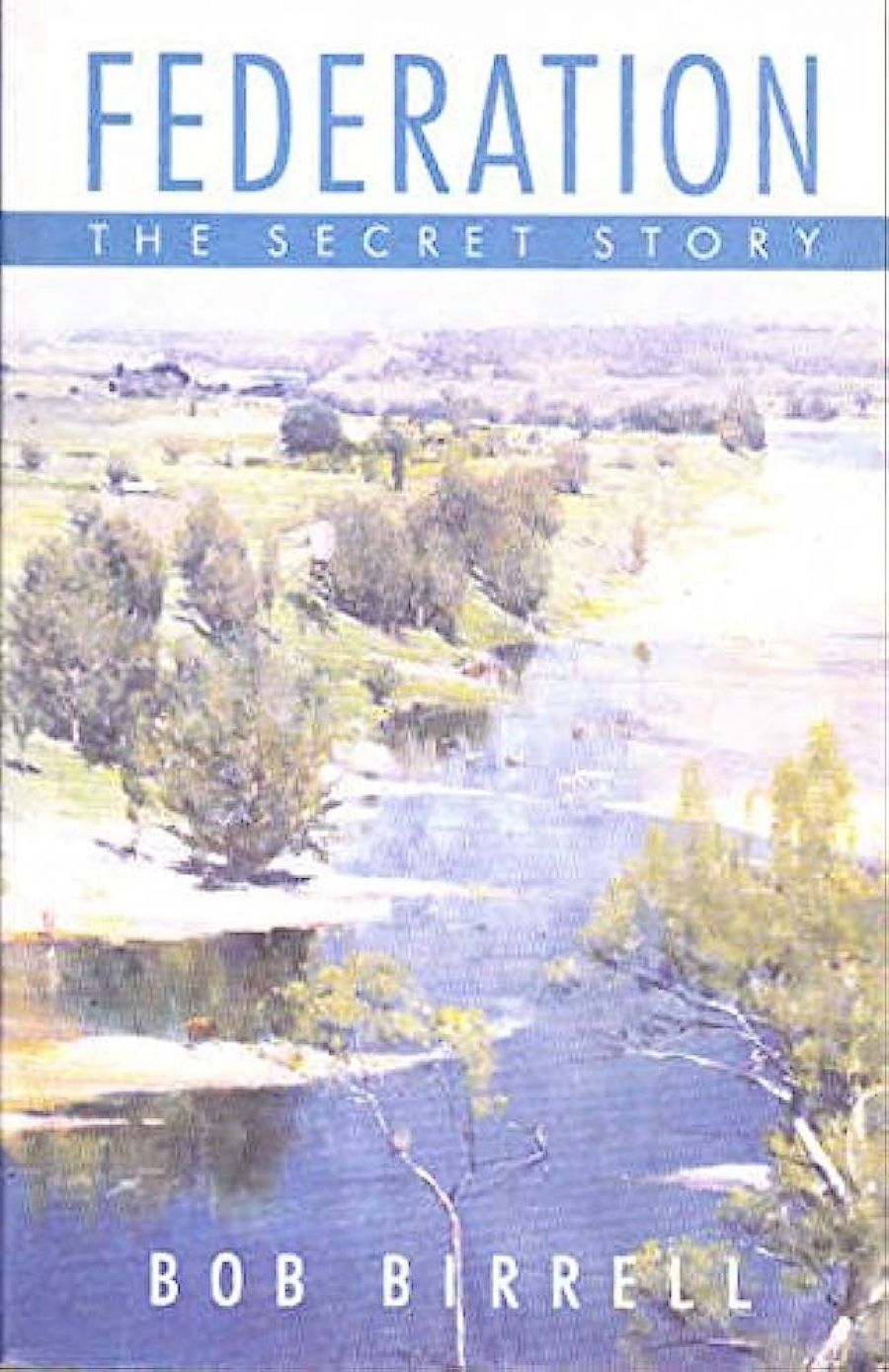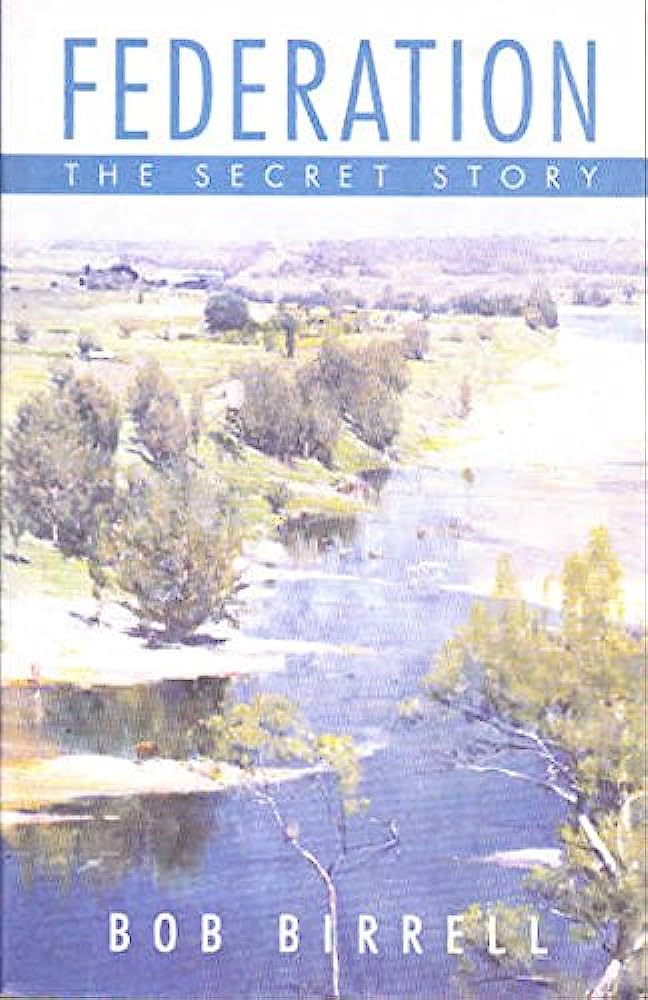
- Free Article: No
- Contents Category: Australian History
- Review Article: Yes
- Article Title: Revisions and Revisionists
- Online Only: No
- Custom Highlight Text:
In 1995 Robert Birrell gave us an interesting book called A Nation of Our Own: Citizenship and nation-building in federated Australia. It traced the growth of a nationalist consciousness in the 1890s and the translation of that Australian nationalism into the forms of Federation and the early shape of the Australian Commonwealth. He argued that there was something distinctively Australian about the ideals and structures created between 1890 and 1910, that far from being a self-interested arrangement devised by lawyers and businessmen, the Australian people were actively engaged and committed to creating the Commonwealth. Now reissued as Federation: The Secret Story by ‘Bob’ Birrell, with a cover based on Arthur Streeton’s The Purple Noon’s Transparent Might, it has a new introduction and conclusion and some corrections to the text.
- Book 1 Title: Federation
- Book 1 Subtitle: The Secret Story
- Book 1 Biblio: Duffy & Snellgrove $19.95 pb, 364 pp
- Book 1 Cover Small (400 x 600):

- Book 1 Cover (800 x 1200):

Birrell’s account of these developments is thought-provoking, though I think he underestimates the importance of full male employment and the right to a job for all able-bodied men as an essential component of citizenship and as a basic goal of the labour movement in those foundation years. For most of our history, Australia has been a land of opportunity where there was always work for men who were willing. To a large extent, the work was the product of development, so while immigration had no effect on employment and helped drive development it was acceptable. It is only since the 1970s that development has ceased to be the simple goal of Australian governments, and unemployment has become a constant rather than an occasional problem. This shift, perhaps more than the work of ‘revisionist’ historians, explains why the messages and ideals of the fathers of Federation became so puzzling and incomprehensible in the closing decades of the twentieth century.
In the new introduction, more space is given to reasons why the history of Federation became a ‘secret’. Birrell blames at least two generations of historians, whom he describes as ‘revisionists’. Since 1951, when we celebrated our first fifty years as a nation, there has been little positive said about Federation. But it must be remembered that historians mainly reflect the popular mood and the preoccupations of those for whom they write. By blaming historians, Birrell is in danger of devaluing his own work, which is revisionist in another way. Fortunately, however, this aspect of the Secret Story has already been overtaken by John Hirst’s version of the historical treatment of Federation in The Sentimental Nation (2000), which is both more incisive and instructive.
Throughout the book, but especially in his new conclusion, Birrell picks away at that other sore which has become inseparable from the story of Federation: the relationship of Australia and our Constitution to Britain and the monarchy, and what it means to be Australian. Yet all these things have changed so much that the history hardly matters. Furthermore, to re-enter the minds of the men and women who argued over Federation requires a considerable feat of historical imagination. We can no longer envisage a world in which the sun never set on the British Empire and in which to be part of that empire seemed much more positive and honourable than our de facto relationship with the United States has ever been. Modern Australians seem to have difficulty with the idea that one could be a fervent Australian nationalist by believing oneself to be a very superior kind of Briton. This may be partly because Britain is no longer what it was, but it is also because a great many Australians are now so many generations removed from their British roots they are hardly aware of them. They think of themselves as Australian simply because they were born here. To them the self-consciousness of the Australian Natives Association, which plays a crucial role in Birrell’s account of Australian identity, must seem very odd or embarrassing, unless of course they have come to believe, like Germaine Greer, that they are not real Australians because they are not Aboriginal.
With an analysis of the 1999 referendum results, Birrell shows that the most single-minded Australian nationalists are now those who voted to retain the monarch as head of state. But he also points out that the ‘core civic culture’ offered by the would-be republicans had a hollow sound. He detects a yearning for an Australian identity, a modem version of ‘the Australian people’ rather than the loose multiculturalism which gave us such an ahistorical group of speakers in the Federation ceremony in Sydney’s Centennial Park on New Year’s Day this year – not an old-fashioned Australian of mixed English/Irish/Scots/Welsh descent among them.
Though it is a bit hard to see exactly what he has in mind, Birrell concludes by saying that he would like to see a republic. But isn’t there also something un-Australian now about the term ‘republic’? ‘Commonwealth’ seems endangered by it, yet, from a people’s movement sadly short of memorable words and phrases, it must surely be the most attractive and distinctively Australian surviving legacy of Federation.


Comments powered by CComment